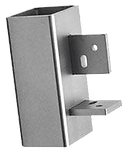WORK TIME
24/7
Office Hours
09.00 am to 06.00 pm
Looking for Lasercut metals Find us
12, 4th Cross, Kempaiah Garden
14th Cross Peenya Industrail Area
Near 9th BMTC Depot, Bangalore - 560058
+91 95385 95335


Metal tube & pipe Laser cut
Rotary Metal Pipe Laser cut
The cutting principle of a laser tube cutter is similar to that of a plane laser cutting machine. However, a tube laser cutting machine is a specialised tool mainly used for standard metal tubes, such as round tubes, rectangular tubes, and oval tubes, as well as profiles like channel steel, angle steel, and some shaped tubes.
There are several advantages to using tube laser cutting machines compared to traditional processing techniques, including:
-
High cutting precision with contour accuracy that can reach ± 0.05mm
-
Flat kerf with no burr, fine slit, and minimal material loss
-
Non-contact processing with a small heat-affected zone, resulting in almost no deformation
-
High cutting efficiency, which allows for mass production
-
Good flexibility due to the use of a professional CNC system and material programming software, allowing for quick and easy changes to the product.
Thanks to these benefits, the best tube laser cutting machines are often used to replace mechanical drilling, milling, sawing, punching, and other hard tool-based processes that are typically required to process different metal tubes. They can perform a variety of tasks, including cutting, chamfering, grooving, hole cutting, scoring, and other complex tube structures.

As a result, tube laser cutting machines are widely used in various industries, including:
-
Sheet metal processing
-
Kitchenware
-
Lighting, automotive
-
Medical equipment
-
Hardware
-
Fitness equipment industries
-
And much more

Tube-blank
Connection

Bend Connection

Simple Assembly
Aids

Simple Connections

Extended Connection
Industry Applications of Tube Laser Cutting
Some of the Examples of metal tube and pipe Laser Cutting:















Industry Applications of Tube Laser Cutting
Some of the prominent industrial and commercial applications of rotary laser cutting include:
Electronics and Technology
A rotary laser level is extensively used in the manufacturing of electronic and technological components, such as heat sinks, enclosures, and brackets. These cutters are excellent for fabricating small and precise parts, as well as sheet metal fabricating and creating intricate designs. The lack of secondary operations ensures that the parts can be assembled quickly and accurately, offering more efficient processes and greater quality control.
Automotive
A laser tube cutter is often found in the automotive industry throughout the production of exhaust systems, fuel rails, chassis components, and countless other parts. As we have discussed, tube lasers offer a high level of precision, accuracy and speed when developing complex shapes, which are a necessity in large-scale automotive manufacturing operations.
Aerospace

The aerospace industry requires high-quality components that can withstand extended periods of extreme stress. As such, manufacturers rely heavily on the best tube laser-cutting machines for the production of various aircraft parts, such as wing spars, lightweight aircraft tubing, engine components, and hydraulic systems. The high precision and accuracy of tube lasers are critical in this industry, where even a small mistake could have severe consequences.
Furniture Manufacturing
Applying a rotary laser level allows furniture manufacturers to produce custom designs for chairs, tables, and other furniture items. The flexibility and speed of tube laser cutting enable manufacturers to produce high-quality furniture designs in less time. It also allows builders to create complex designs and shapes that were not possible with traditional methods.
Medical Devices
Tube lasers are used in the production of medical devices, such as surgical instruments, implants, and diagnostic equipment. The precision and accuracy of 3D laser cutting make them an ideal tool for manufacturing small, intricate medical parts with high tolerances.
